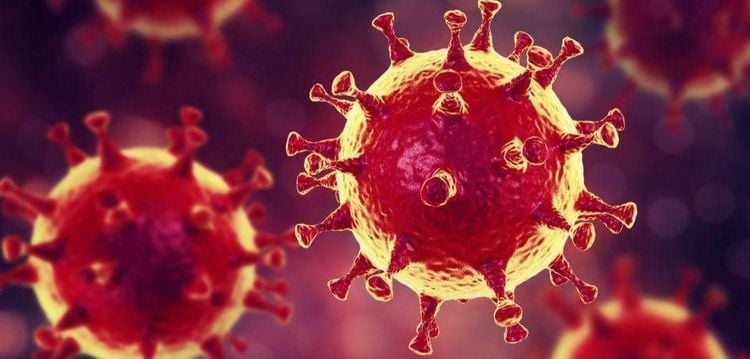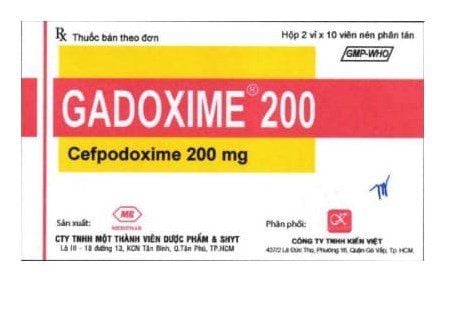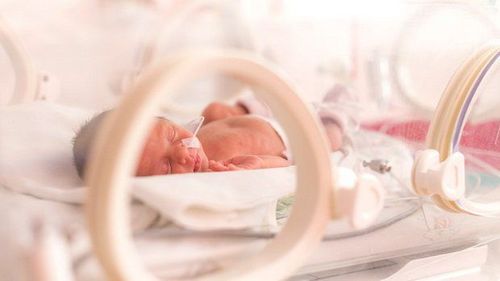This is an automatically translated article.
Translated and synthesized by Dr. Nguyen Hong Thanh - Vinmec Institute of Stem Cell and Gene Technology
MERS stands for Middle East Respiratory Syndrome, roughly translated as "Middle East Respiratory Syndrome" that occurred in 2012, causing acute respiratory failure leading to death in many countries around the world. MERS can be spread from person to person, especially in endemic areas and in hospital and other healthcare settings.
1. When did MERS appear?
From June 2012 to June 30, 2019, there were 2449 confirmed cases of MERS-CoV virus causing Middle East respiratory syndrome. Of these, up to 84% of cases were recorded in Saudi Arabia. MERS-CoV has spread to 27 countries in the Middle East, North Africa, Europe, Asia and the US. As of January 2019, there had been a total of 845 deaths from MERS worldwide, accounting for 34.5% of infections.
2. Viral characteristics, origin, virulence
MERS-CoV virus, belonging to the family Coronaviridae, is capable of infecting and causing disease in humans, mammals, and some birds. The MERS virus was identified as a new strain of coronavirus capable of causing rapidly progressive acute respiratory infections in humans, especially in the elderly and young children, who are in poor health or are suffering from chronic diseases. other. MERS-CoV was determined to be different from all coronavirus strains found in humans, and also from the SARS-CoV strain that caused the 2002-2003 SARS epidemic. However, similar to SARS-CoV, MERS-CoV also originated in bats and infects humans through camels.

Coronavirus gây bệnh MERS với các protein hình vương miện trên bề mặt (nguồn: www.intelligenliving.com)
3. Symptoms noted
Many confirmed cases of MERS-CoV have rapidly progressed to serious respiratory diseases, especially severe pneumonia. Symptoms include fever, cough and difficulty breathing. In addition, several symptoms have been reported, including muscle aches and pains, diarrhea, and vomiting.
Some cases were confirmed positive, however, there were no symptoms of the disease caused by MERS-CoV or only mild symptoms. These cases were ordered to be tested due to close contact with severe cases.
4. Route of transmission
There is evidence that MERS-CoV originated in bats, and has been transmitted to humans through camels. A multinational team of researchers including Germany, Great Britain, Russia and Saudi Arabia found MERS-CoV to be present in nearly 23% of camels studied in Saudi Arabia, indicating an export rate high viral load and high risk to camel caretakers. The team also found that MERS-CoV was more prevalent in camels of domestic origin in Saudi Arabia than in camels imported from Africa (Azhar 2014; El-Kafrawy 2019).
Therefore, WHO has issued a warning about the transmission of MERS-CoV from camels to humans in the Arabian peninsula with the risk of human-to-human transmission, mainly in hospitals or other health facilities, mainly in hospitals or other health facilities. Weakness in Saudi Arabia continues. In addition, there is a risk of spreading to the community through trade and tourism activities between countries in the region and around the world. There is no clear evidence that the virus can be transmitted from an infected person but has not shown symptoms to a healthy person.

Lạc đà, động vật trung gian truyền MERS-CoV sang người (nguồn: alarabiya.net)
5. Diagnosis and treatment
Diagnosis by clinical symptoms (according to the guidance of the Ministry of Health):
Common initial symptoms are fever, cough, chills, sore throat, muscle pain, joint pain. The patient then developed dyspnea and rapidly progressed to pneumonia. About one-third of patients present with gastrointestinal symptoms such as vomiting and diarrhea. Half of patients progress rapidly to pneumonia and 10% will progress to acute respiratory distress syndrome (ARDS). Chest X-ray results are consistent with viral pneumonia and ARDS. A complete blood count usually shows leukopenia, especially lymphocytopenia. Suspected case:
Traveled to an endemic area or lived in an endemic area with MERS-CoV about 10 days before the onset of symptoms. Close contact with confirmed/probable cases. Patients presenting with an acute respiratory tract infection, including fever above 38°C, cough, dyspnea, pulmonary parenchymal lesions, pneumonia, or acute respiratory distress syndrome (ARDS) based on clinical or X-ray images. Not accounted for by other infections or etiologies, including all cases where testing is indicated for the diagnosis of community-acquired pneumonia.
Possible cases:
Direct contact with a confirmed case by testing, including caregivers of the patient; medical staff or family members; people who live with the patient or visit the patient during the illness. Patients with clinical, radiological, or histopathological findings of parenchymal lung disease (eg, pneumonia or ARDS) that fit the above case definition, but are not confirmed by laboratory testing. because: the specimen cannot be obtained, or the test cannot be performed to diagnose other causes of respiratory infection. Unexplained due to other infections or other causes. Confirmed case:
Is a case with clinical manifestations as mentioned above and confirmed by PCR test positive for new corona virus. The technique to identify Corona virus is a Real time RT - PCR technique with respiratory fluid, sputum, and endotracheal fluid samples taken according to the correct procedure and preserved in a suitable environment. Note: For the first cases of suspected new corona virus infection, units need to save samples and transfer them to testing facilities authorized by the Ministry of Health for confirmation.
Differential diagnosis:
The clinical picture caused by Mers-CoV includes many different symptoms, but mainly acute respiratory failure and acute renal failure, so it must be distinguished from the following cases:
Severe flu (influenza A/H1N1 or A/H5N1.....). Atypical pneumonia. Sepsis causes kidney failure and respiratory failure. Treatment
With suspected or possible cases, they must be examined at a hospital, given specific tests to diagnose and determine the risk of MERS-CoV infection. With confirmed cases of MERS-CoV infection, it is necessary to be hospitalized for monitoring and complete isolation. There is no specific treatment drug, so it mainly treats symptoms, detects and promptly treats respiratory failure and kidney failure.
Source: WHO, CDC, PUBMED, CLINIALTRIAL.GOV
MORE:
Disease evolution and ways to prevent MERS-CoV The origin and symptoms of the disease caused by MERS CoV 2019-nCoV are similar to the viruses that cause MERS and SARS are not? Information you need to know about the disease caused by MERS CoV














